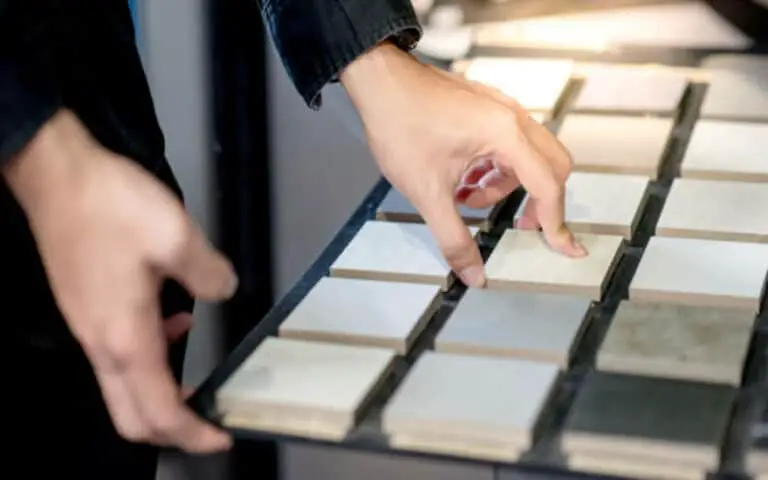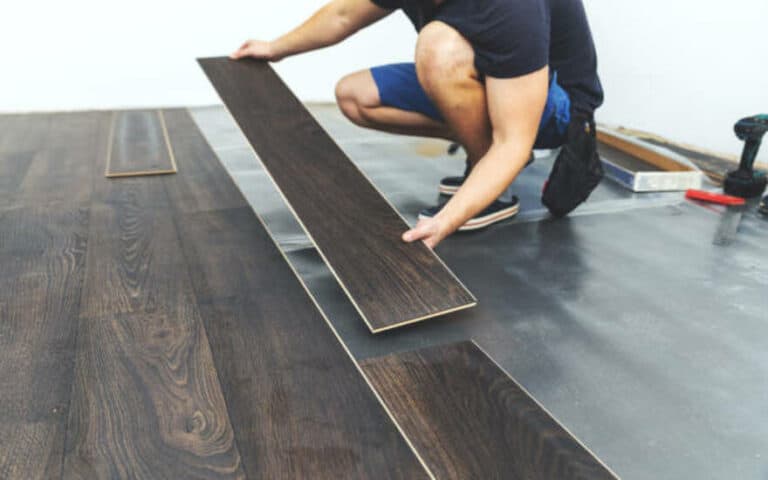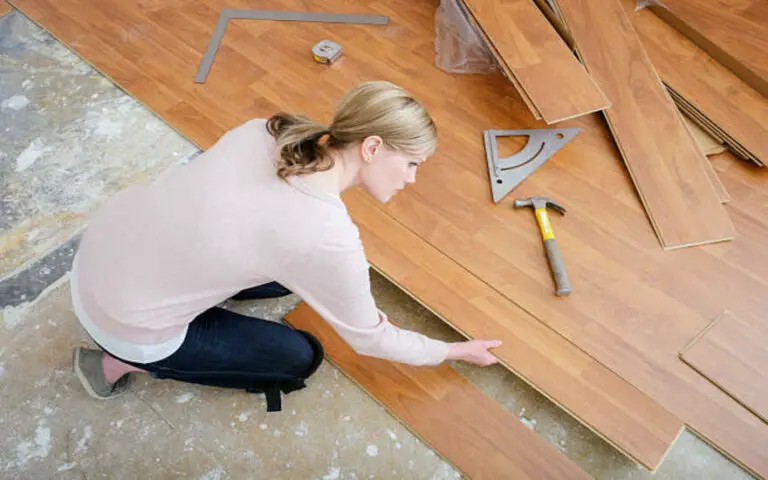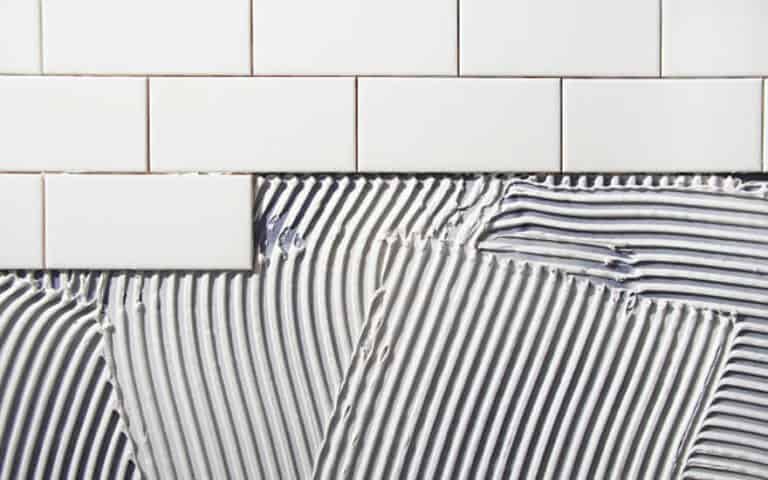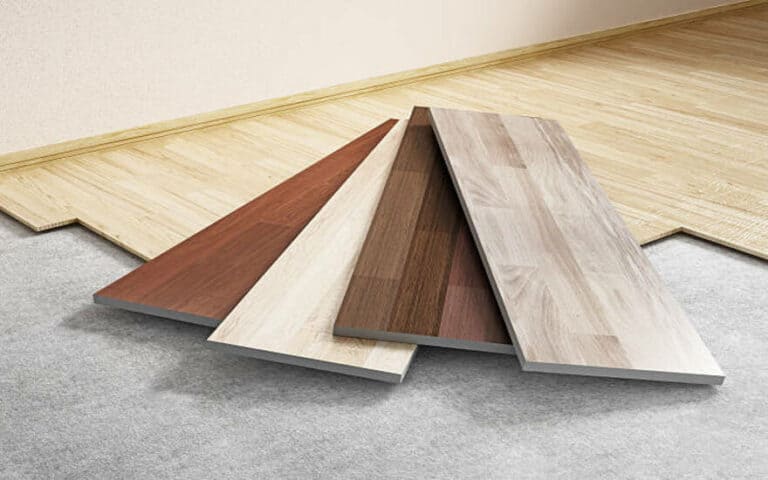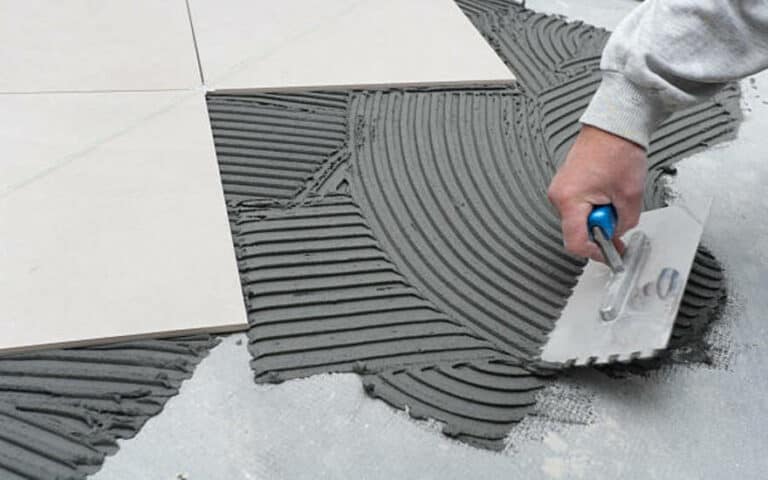The Answer is Yes!
If you’re considering installing laminate flooring on plywood, you may wonder if you need a moisture barrier. This blog post will explore the answer to this question and provide tips on properly installing your new flooring.

Moisture Barriers for Laminate Flooring? Step-By-Step Guide
Once you’ve determined that you need to install a moisture barrier, the next step is to select the right one. The type of moisture barrier you use will depend on the type of subfloor, the type of laminate flooring, and the space conditions. Some moisture barriers are designed specifically for certain flooring or substrates, while others are universal. Make sure to read the instructions carefully before making your selection.
Step 1: Check the Subfloor
Now that you know why a moisture barrier is important, let’s look at how to install one. The first step is to check your subfloor. You will need to know what subfloor you have, whether cement, plywood or something else.
This will determine the type of moisture barrier you will need. After all, not all moisture barriers are created equal – some are designed for certain subfloors and not others. Be sure to check the product instructions before selecting a moisture barrier.
Step 2: Inspect the Laminate Flooring
Before installing a moisture barrier for your laminate flooring, it is important to inspect the flooring itself. Check for any cracks, chips, or warps in the planks. If there are any issues, you will want to replace them before installing the moisture barrier.
Additionally, check the planks for any signs of moisture damage, such as discoloration or swelling. Replacing those planks and installing a moisture barrier over the entire subfloor is best if you detect any moisture damage. Once you have inspected the planks and addressed any issues, you can install the moisture barrier.
Step 3: Choose a Moisture Barrier
Now that you have checked the subfloor and inspected the laminate flooring, it’s time to choose a moisture barrier. Several options include plastic sheeting, foam padding, and special moisture-resistant underlayment. Each type of moisture barrier offers different benefits and drawbacks. It’s important to consider your specific needs when choosing the best option for your project.
Step 4: Install the Moisture Barrier
Now that you have the moisture barrier and have inspected the laminate flooring and subfloor, it’s time to install it. Start by laying your sheet along one edge of the room and taping it down. Make sure to spread it out as much as possible and ensure it is properly sealed. Then continue to lay out the rest of the sheet along the entire perimeter of the room.
Once the entire sheet is laid out, use a stapler to secure it. Make sure to staple every few inches to ensure a proper seal. After stapling, you should cover the entire surface with heavy-duty painter’s tape. This will help make sure that the moisture barrier is properly sealed.
Step 5: Install the Laminate Flooring
Now that you have chosen the right moisture barrier and installed it properly, you are ready to put in your laminate flooring. This process will require patience and simple tools like a saw, hammer, and measuring tape. You will also need a pulling bar, spacers, and a tapping block. Start by laying out the boards in the room and make sure they fit the space.
Once the planks are in the right place, you can install them. Start in one corner of the room and use the tapping block to join each piece of flooring together. Make sure each plank is level and secure with spacers before moving on to the next. Continue this process until you have completed your entire room.
7 Benefits of Using a Moisture Barrier?
When installing laminate flooring, using a moisture barrier is essential. Not only does it protect the flooring from moisture-related damage, but it also provides other benefits. Here are seven advantages of using a moisture barrier for laminate flooring:
1. Reduces swelling and warping of the flooring
Moisture barriers are essential for preventing swelling and warping of the laminate flooring. The barrier prevents moisture from seeping into the flooring, which can cause the laminate planks to swell and warp.
This makes keeping your floor straight and level easier, ensuring it looks great for years to come. Additionally, moisture barriers provide an extra layer of protection against any water damage that may occur.
2. Prevents mold and mildew growth
Mold and mildew can be major problems, especially regarding flooring. Moisture barriers can help prevent mold and mildew growth by blocking moisture from entering the subfloor. This is especially important if you live in an area with high humidity. With a moisture barrier, you can rest assured that your flooring will remain free of mold and mildew for years.
3. Protects from moisture absorption
When it comes to moisture protection, a moisture or vapor barrier is essential when installing laminate flooring on plywood. It helps to prevent moisture from wicking up from the ground, through the subfloor, and absorbing into the hardwood. This is particularly important if the laminate flooring is installed above a crawl space.
These under-slab moisture barriers have long been used to protect the foundation of homes and buildings from moisture damage, and thus, they should also be used below laminate flooring for the same purpose. With a moisture barrier in place, you can be sure that your laminate flooring will be protected from any excess moisture and remain in good condition for many years.
4. Increases the durability of the flooring
Installing a moisture barrier is an important part of installing laminate flooring on plywood. It helps to increase the durability of the flooring by protecting it from water damage, mold and mildew growth, and other environmental threats.
Additionally, it can help to reduce swelling and warping of the flooring and helps to keep out dust, dirt, and insects. Using a moisture barrier gives you peace of mind knowing that your laminate flooring is protected and will last for years to come.
5. Eliminates floating floor issues
Floating floors require a moisture barrier to prevent the floor from expanding and buckling over time due to changes in temperature and humidity. If you don’t use a moisture barrier, the floating floor may become unstable and cause the planks to separate, ruining the overall look. A moisture barrier eliminates this issue and ensures that your laminate flooring remains stable for years.
6. It keeps out dust, dirt, and insects
As if the benefits mentioned earlier weren’t enough, moisture barriers are also great at avoiding dust, dirt, and insects. Installing a moisture barrier can act as a physical barrier to protect your laminate flooring from becoming infiltrated by dust, dirt, and even insects. This is especially important if you live in an area that is prone to having a lot of dust or insects.
By installing a moisture barrier, you can rest assured that your laminate flooring will be protected from any unwanted dirt and insects.
7. Provides additional insulation
Insulation is another great benefit of a moisture barrier. Without a barrier, moisture can seep through the plywood subfloor and into the laminate flooring, causing it to swell and warp. A moisture barrier is an additional layer of insulation that prevents this from happening. Not only does it keep out moisture, but it also helps keep in heat and sound, making your flooring more energy efficient and quieter.
Summary
When installing laminate flooring on a plywood subfloor, one of the most important steps is determining whether you need a moisture barrier. If your subfloor is in perfect condition, you can skip this step. However, if there is any chance of moisture being present, you must install a moisture barrier. This will help to reduce swelling and warping of the flooring, prevent mold and mildew growth, increase durability, and even provide additional insulation. Investing in a moisture barrier for your laminate flooring installation allows you to enjoy all of these benefits and more.

